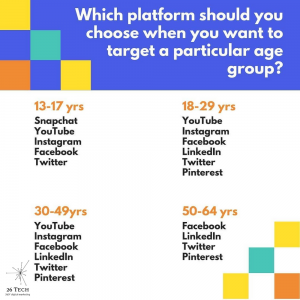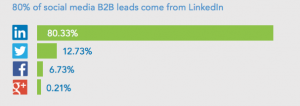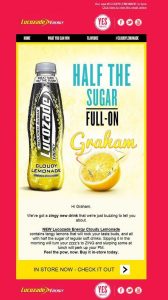The goal of any eCommerce business is clear: as you draw your target audience to your website, you want to simultaneously convert them into customers. With billions of people online, Conversion Rate Optimization (CRO) is the new cornerstone of businesses operating online.
“Your conversion rate is the easiest way to increase profits for your business and that’s why it’s so important to optimize it.”
~ Neil Patel
What does conversion optimization look like in practice? In many cases, it requires technical tactics involving website metrics and integration with your existing sales funnel. But there’s one that meshes particularly well with new eCommerce customer expectations: personalization.
In this article, we want to ask: does personalization lead to better CRO or should you put your emphasis elsewhere?
CRO 101: The Science of Conversion
Some marketing efforts are aimed at gaining more traffic to your site. In contrast, conversion optimization is about getting more visitors to take action on your site – without necessarily increasing traffic.
There is a wide range of conversion rates. Average sites see about 1% to 3% conversion, while top-performing sites can see up to 9% conversion. Clearly it’s an area to focus on.
Usually the goal of CRO is a purchase – but it could be to sign up for a newsletter, share a post, or respond to any number of calls to action.
Whatever the purpose, CRO requires solid methodology and dedicated technology for success. Some approaches track bounce rate or focus on cart abandonment – but others hone in on customer experience.
How Personalization Improves CRO
The CRO definition above makes it clear that personalization is a subset of CRO strategies. After all, the whole idea of personalization is to qualify leads. If you look at them as items on a list, CRO comes before personalization. But if you look at them as building blocks, personalization may just take the top spot. And here’s why: personalization extends beyond straightforward conversion optimization into customer relationships.
When introduced across channels, it can increase trust in your brand, lead to better customer service interactions, and even be a springboard to authentic advocacy from your customers. If CRO is the science of conversion, personalization is the art of connection. And customers are looking to connect with brands in a personal way.
These are three ways personalization improves CRO:
- It puts what your customers want right in front of them. Have you ever spent hours looking for the right product? So have we. A personalized approach avoids the need for a lengthy search.
- It speeds up the sales cycle. eCommerce sites rarely make a sale on a customer’s first visit to the site. Personalization shortens the sales cycle by providing a better experience the first time around.
- It introduces trust to the customer-vendor relationship. Customers are no longer just looking for products. They want to connect with a brand. Personalizing your content builds this trust.
Personalization attempts to move away from the traditional sales funnel approach. For eCommerce businesses, it leverages digital technology for the benefit of both marketing and sales efforts.
According to revered consulting firm McKinsey & Company, personalization can be considered marketing’s Holy Grail (their words, not ours): “Done right, personalization enhances customer’s lives and increases engagement and loyalty by delivering messages that are tuned to and even anticipate what customers really want.”
The same report highlights the efficiency of personalization. It reduces acquisition costs by up to 50 percent, and saves 10-30% of marketing spend.
Personalization is becoming the new expectation. 86% of customers said that personalization impacted their purchase decisions. In response, nearly 70% of businesses have started to prioritize personalized experiences.
So what are some ways you can introduce personalization to your eCommerce brand?
5 Tips for Improving Personalization on Your eCommerce Store
#1: Start With Your Customer, Not With Technology
Steve Jobs once said, “You have to start with the customer experience and work backwards to the technology.” The same is true for introducing personalization to your brand. Before jumping headlong into a tech solution, make sure you have a foundation first.
Ensure your website is easy to navigate. Look at customer reviews to see how you can improve service. Make sure you have a mobile-friendly site. With these factors in place, you can plug in the right personalization features for your customers. It could be a new intuitive search function – or it be honing your communication with user behavior and information.
#2: Develop a Marketing Stack That Prioritizes Personalization
Just because you don’t start with tech tools doesn’t mean you won’t need them. Do your research and find a handful of marketing and sales tool that will fit the bill for your purpose. You could use marketing automation tools, A/B testing software, visual search tools, social media integration, retargeting tools – the list goes on.
The point is there is no one-size-fits-all solution to personalization. You’ll need to invest the time and energy to learn which tools will work for you – and how to use them effectively. Reading online reviews is a great way to research tools and narrow down your list.
#3: Show Customers What They Want to See
Personalization isn’t just about using your customer’s name or birthday for some targeted emails. It’s about making sure you get the products your customers want to see. Search history, past purchases and customer profiling are all important in this area, and the right personalization tool will put that data to use. Another option is to revamp the way customers search for products, finding a more intuitive approach.
You can even use self-segmentation. This utilizes a few quick questions when a visitor enters the site to establish who they are and what they’re looking for.
#4: Utilize User-Generated Content in Your Marketing & Sales Efforts
This is less about personalization in the CRO sense, and more about the personal connection we’ve talked about. Did you know that 84% of people trust online reviews as much as a personal recommendation? That’s not for nothing.
UGC like customer reviews or use cases can be a fantastic way to replace some of your marketing language with something more genuine. It will give you new marketing material to work with and help you get to know your customers. You can choose to incorporate reviews or other UGC on your landing pages, social media sites, call-to-action pop ups and more.
The Bottom Line: Personalization is CRO Best Practice
As an online business, your primary goal is to convert your target audience into visitors, and then visitors into customers. In that sense, CRO comes before personalization. But which should you prioritize?
Here’s the thing: it’s not a matter of what comes first. It’s a matter of what you are able to accomplish, and what will have the best results the fastest. For eCommerce sites, personalization can represent a huge step forward in Conversion Rate Optimization.
“Look to create custom content that pushes the boundaries of the technology you have access to, and remember to always test your results. The more personalized your content, the more you’ll stay ahead of the curve and impress customers with the content you’re delivering just to them.”
~ Neil Patel
Personalization is about taking what you know about your customers and using the tech tools you already have available to you. CRO may be the cornerstone of your eCommerce business, but personalization can be the cornerstone of improving your CRO. So what’s stopping you from jumping in?
A version of this post appeared here.
Digital & Social Articles on Business 2 Community
(165)







